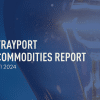Energy markets are rapidly changing and experiencing increased volatility, making it difficult for energy traders to make well-informed decisions. Energy commodities trading, including power and gas, are becoming more and more data-driven. Yet, due to the esoteric nature, sheer volume and similarity of contracts, it is complicated to compile a complete picture in a short amount of time. To best determine risk and seek out value, commodities traders need efficient ways to analyse available data to improve overall profitability.
In this post we look at 3 top ways energy traders can determine how best data can be captured, recorded, stored and normalised, and efficiently analysed and tested.
1. Data Visualisation
In order to get real value from data, it helps to see how different datasets look on a screen, instead of appearing as simply ‘flat’ numbers. This can be achieved by:
-
- Order book reconstruction: Allows traders to reconstruct the order book at any one particular point in the past, defined either by timeframe or even certain products. You can then observe how the order book has actually evolved over the course of the day, say, in terms of price levels and top of book bid/ask spreads. Being able to do this within your trading screen in a matter of seconds is obviously advantageous;
-
- Advanced trade query: Permits analysis of historical trades by the instantaneous retrieval of data involving a particular product or a specific contract. The ability to export this information into Excel for further analysis is extremely helpful.
2. Data Integration
Ideally, traders need a way to be able to integrate historic data queries into their own models, algorithms and strategies, all in a fast and robust manner. In order to be as useful as possible, this is best performed via an API that is both platform and language agnostic. REST-based APIs do just the trick and require only a few lines of coding which reduce time and cost. The types of raw data that traders should look to access include aggregated time data (composed of top order book data) and lists of market trades (including reference data).
3. End-of-Day Surveillance & Model/Algo Testing
Tools can also be used to source trade and order event data, in addition to evaluating the efficiency of trading models. This can be done for either end-of-day surveillance, by capturing orderbook data from OTC brokers and a selection of exchanges, as well as for algo back-testing and model building.
One key area to highlight in the above examples is the use of ‘live’ data. Data visualisation products are typically connected via an API to view trades in real time, whereas data integration capabilities allow an API to query historic trade and order information.
Summary
By providing traders with the ability to actually ‘see’, on a visual basis, where trades have taken place in the order book, means they have a better idea of whether they are currently falling on the buy or sell side of the market. Add to that the enhanced capabilities of integrating data into their own algos or models, as well as the ability to easily test these scenarios and traders can now be well and truly empowered to make the best possible data-driven decisions.
Are you ready to improve the analysis on your data?




